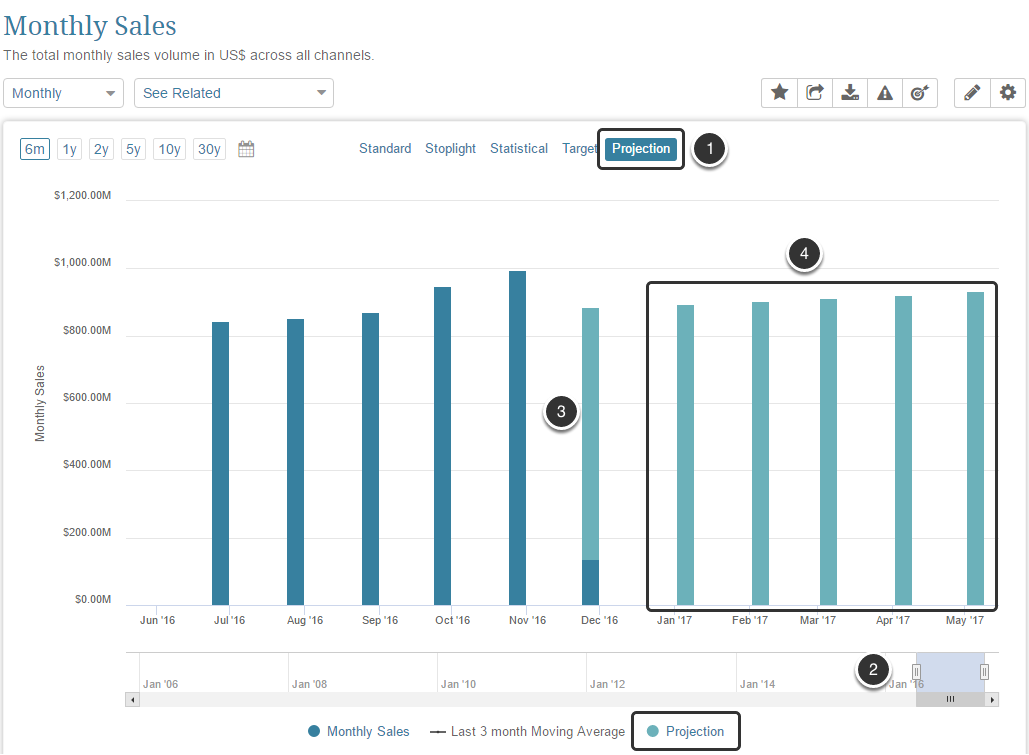On the Metric Editor, you can include Projections that provide a view of how results experienced to-date can be used to predict future results based on optional settings established by the Metric's creator. This article describes the functions and types of Projections.
For more information, see:
Projection Basics
Projections may be calculated for a specified number of periods, governed by the Measurement Interval on which a Metric is based. For example, Projections might be set to cover the next 10 days on a Daily Metric.
Two different types of projections can be generated for a Metric and, if dimensioned, for each of its Dimension Values:
- Future Measurement Period Projections: Can be created for any Metric, whether or not partial period data is collected. When projections are made for Metrics that collect partial period data, the values already collected are used in computing future values. If you include a Future Projection, a Projection View is generated on your Metric Viewer.
- Partial Period Projections: Available only if the Measurement Interval is longer than one day and the Metric supports collecting data for less than a full period. This allows the the value at the end of current period value to be predicted based on measurements already gathered for a partial period. You also have to select another Metric that can be used to determine the latest date within the period for which data has been collected. This is a key factor in the projection formula. As an example, if a measurement of a monthly metric on is taken on the 10th day of the month, the result for the entire month can be predicted based on the knowledge of the number of days in that month that have data. No Projection View is generated if you specify a Partial Period Projection and do not also include a Future Projection..
Projections derive values based on calculation settings that you specify:
- Linear Regression: typically employed when the Metric’s values accrue in a linear fashion through the specified Measurement Interval; uses the standard statistical formula
- Historical Trend: based on another element selected for analysis
